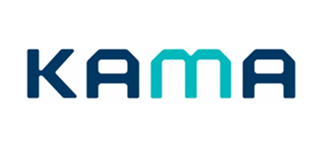Address
Telephone
Press Email
KAMA
Korea Automobile Manufacturers Association

Association Storytelling
Founded in 1988, the Korea Automobile & Mobility Association (KAMA) represents the interests of Korea’s automotive and mobility industry. KAMA promotes industrial growth through policy advocacy, global cooperation, technology advancement, and environmental sustainability. It works closely with the government, research institutions, and international organizations to foster a competitive and future-ready mobility ecosystem.
Timeline with key dates
1988: Korea Automobile Manufacturers Association (KAMA) established to promote the development of the Korean automotive industry.
1992: Supported the enactment of the Automobile Industry Promotion Act and strengthened policy advocacy and statistical reporting.
1995: Launched the first Seoul Motor Show, Korea’s first international automotive exhibition, marking the beginning of KAMA’s leadership in promoting global automotive events.
1996–2000: Expanded international cooperation by joining global organizations such as OICA and APEC Automotive Dialogue.
2004: Changed the Korean name to “Korea Automobile Manufacturers Association” (reflecting expanded scope of activities).
2008–2010s: Focused on environmental regulations, fuel efficiency, and international standard harmonization.
2017: Began full-scale initiatives for future vehicles including autonomous driving, EVs, and smart mobility.
2020: Hosted the first Hydrogen Mobility+ Show, the world’s first hydrogen mobility exhibition, marking Korea’s leadership in hydrogen and fuel cell vehicle innovation.
2021: Renamed to Korea Automobile & Mobility Association (KAMA), highlighting transition from traditional manufacturing to mobility innovation.
2020s: Leading efforts for carbon neutrality, digital transformation, and global mobility cooperation through initiatives such as APEC Automotive Dialogue and Seoul Mobility Show.
Vision
To Actively Contribute Toward the Advancement of the Korea Automobile Industry
Mission
KAMA serves as a Dynamic Facilitator in the automotive industry — performing the roles of communicator, mediator, and advocator to encourage active participation, cooperation, and knowledge-sharing among stakeholders, and to promote effective use of human and material resources for collective success.
Culture and Values
Communicator : Facilitates dialogue and mutual understanding among stakeholders
Mediator : Gathers diverse opinions and helps achieve harmony and balance.
Advocator : Suggests better directions and ensures that industry perspectives are reflected in policies and initiatives
Why to join Member’s association
KAMA represents Korea’s automotive and mobility industry as the nation’s leading policy and cooperation platform.
- Engage in policy advocacy through close coordination with the government on industrial, environmental, and trade issues.
- Participate in global initiatives and networks such as OICA and APEC Automotive Dialogue and to strengthen international collaboration.
- Access comprehensive industry data and analyses, including production, trade, and technology statistics.
- Receive support on regulatory and technical issues, including harmonization with international standards for safety and environment.
- Promote innovation and mobility development through cooperative exhibitions such as the Seoul Mobility Show and World Hydrogen Expo.
- Build strong partnerships with domestic and global automotive stakeholders, enhancing communication and business opportunities.
Local automotive market
Korea ranks among the top five automobile-producing countries worldwide. The industry is undergoing transformation with rapid progress in electrification, hydrogen mobility, and autonomous driving. Government and industry partnerships are accelerating the shift toward carbon neutrality and digital mobility solutions.
Nam Hoon Kang
Ju-Hong Kim
Jung Ran Suh
Kim Ki Taig
Jun-Ki Kim
Kyung-Sun Yun
Jee Han Lee
Sung Min Oh
Eun Kyoung Kwon
Duck Sang Chang
Min-Young Ham
Jun Ho Seo

